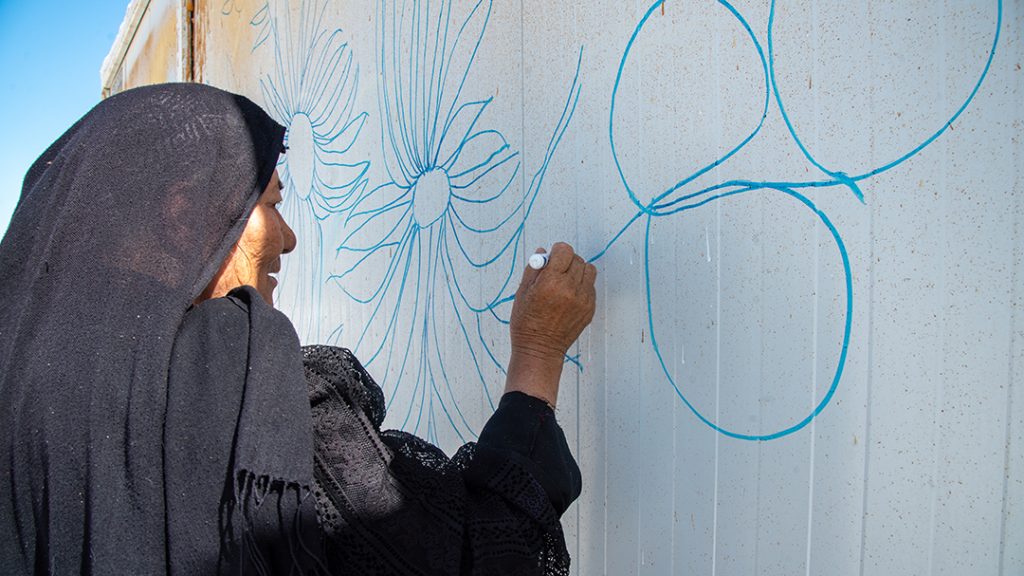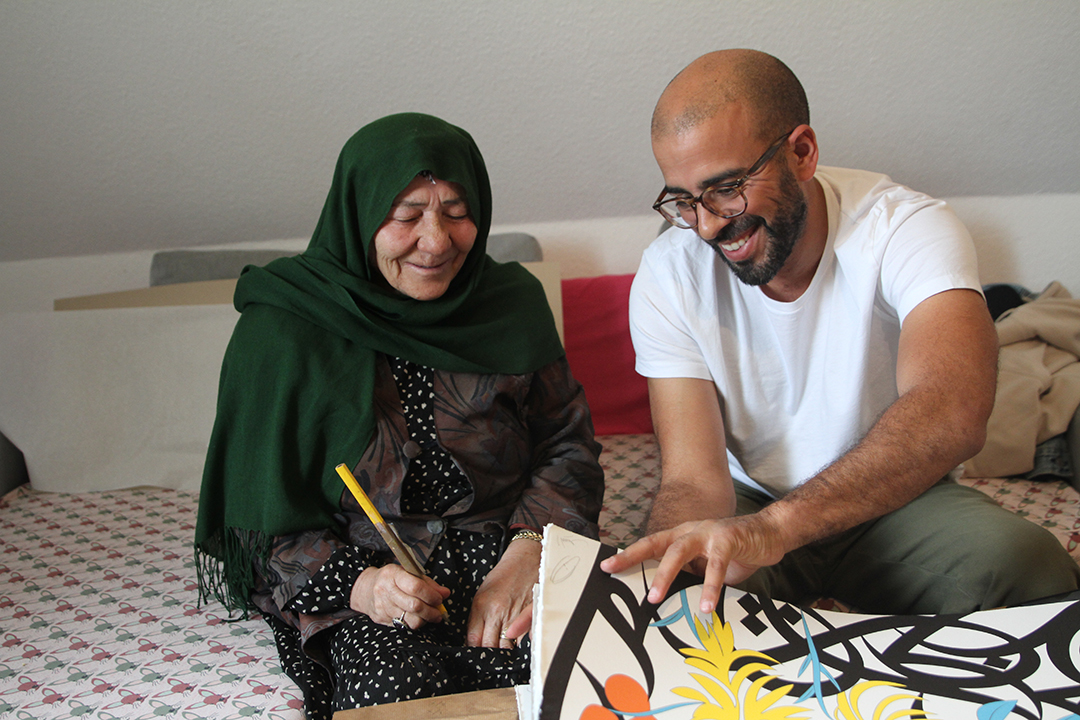
She had never before held a pencil in her hands with the intention of drawing. This need arose for her when, at the age of 75, she was forced to leave Afghanistan and through Turkey a year and a half ago ended up in the Closed Controlled Center for Refugees in Montenegro. Lesvosrefugee.
OUR Bibi Zahra he is a member of the Hazara minority. She decided she had no choice but to leave her homeland when the Taliban killed two members of her family. “I could not sleep at night and painted alone. I felt calm when I was painting, and my mind was moving away from the sadness that I felt,” he describes in “K.” Painting, she said, had a therapeutic effect on her. Her favorite and most frequent plot on the pages of notebooks where she drew were flowers, which so remind her of her beloved homeland.
But when these plans fell into the hands of a Franco-Tunisian artist, el seedfor Bibi, everything was about to change.

From a village in Nepal to the favelas of Rio de Janeiro, French-Tunisian artist eL Seed has made his mark on art in many “difficult” areas around the world. Inspired by Arabic calligraphy, he creates from small graffiti to murals with the aim of bringing color and joy to the communities of people who live there.
Invited to Montenegro by the organization Klabu, which promotes actions to support the refugees of the structure, the artist met Bibi Zahra and was impressed by her will and strength for life. “She showed me her plans and I showed mine. I went back and asked her to work on the wall design. He agreed directly, ”says the artist in an interview with“ K ”.
The two created a graffiti together that combines Bibi’s flowers with the calligraphy of eL Seed, who wrote the phrase “Hope for Life”. “Everyone was very happy to see this woman painting on the wall,” the artist notes in a conversation with K. As he mentions, Mrs. Zahra was very demanding and watched him fill her flowers with colors to make sure she didn’t ruin the design.
In the months that followed, eL Seed continued to travel on her art projects, and Bibi, as soon as she received official documents, left for Germany, where she lives today with her son.

“We often talked to each other. I don’t know her language, nor does she speak English, but we managed to get along,” says El Cid, who was determined to surprise her. During a trip to Paris, he lithographed their joint design and traveled to Germany to give it to her, announcing his plan to sell it and split the proceeds. “We signed the design together, which is now available for sale online,” the artist says, adding that the proceeds from the project could help the 75-year-old build something new in the country where she now lives. “I am very happy that my painting will be sold. This gives me hope for life,” Ms. Zahra notes in a conversation with “K”.
She says part of the proceeds from the sale of the prints will go to her husband, who is ill and still lives in Afghanistan, while some will be used to buy tools so she can continue painting.
The two artists continue to communicate frequently to this day. “It’s so sweet how through art you connect with people you didn’t know. Art has this ability to allow us to overcome barriers, barriers of language and nationality,” says eL Seed. According to him, he learned a lot through the collaboration with a 75-year-old man.
“This is a perfect example that there is no age to start something. Sometimes we limit ourselves. Bibi is an example of strength and she is full of hope.”
Source: Kathimerini
Ashley Bailey is a talented author and journalist known for her writing on trending topics. Currently working at 247 news reel, she brings readers fresh perspectives on current issues. With her well-researched and thought-provoking articles, she captures the zeitgeist and stays ahead of the latest trends. Ashley’s writing is a must-read for anyone interested in staying up-to-date with the latest developments.